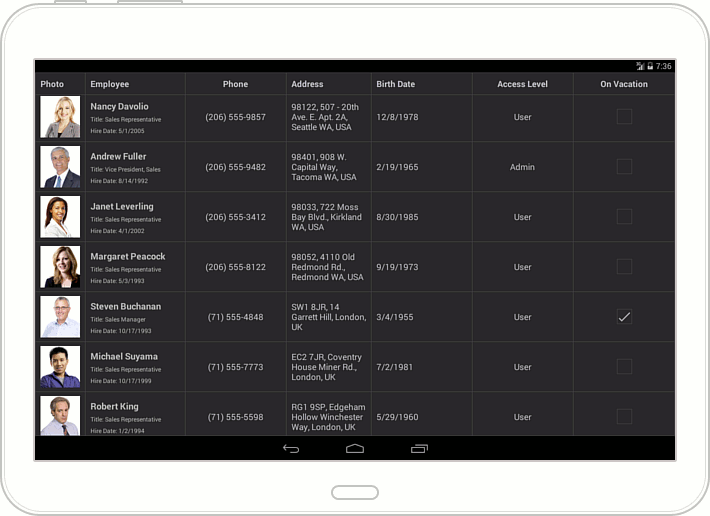GridControl.Columns Property
Provides access to the grid’s collection of columns.
Namespace: DevExpress.Mobile.DataGrid
Assembly: DevExpress.Mobile.Grid.v18.2.dll
#Declaration
[XtraSerializableProperty(XtraSerializationVisibility.Collection, true, false, true)]
public GridColumnCollection Columns { get; }#Property Value
| Type | Description |
|---|---|
| Grid |
A Grid |
#Remarks
Important
This documentation topic describes legacy technology. We no longer develop new functionality for the Grid
The grid stores its columns in the Columns collection. This collection provides methods that allow you to add new and remove existing columns. Individual columns are specified by GridColumn descendants, and can be accessed using indexer notation or by the field name (GridColumn.FieldName). To access only columns that are currently displayed within the grid, use the GridControl.VisibleColumns property.
To learn more on grid columns, see the following topics.
- Columns Overview
- Create Columns and Bind Them to Data Fields
- Unbound Columns
- Identify and Access Columns
#Example
This example shows how to add columns to GridControl to display and edit data of different types. The grid is bound to a collection of Employee objects. Each Employee object contains an employee’s photo (image), name, position, phone, address (strings), hire and birth dates (DateTime values), a value that specifies an employee’s access level, and a Boolean value indicating whether an employee is on vacation.


Grid columns are stored in the GridControl.Columns collection. An individual column is specified by a GridColumn descendant, which is appropriate to the type of data contained in this column. In this example, to display information on employees and allow end-users to edit it, the following columns are created in the grid.
Grid Column | Description |
|---|---|
Photo | This column displays employee photos which are images added to a project as embedded resources. |
Employee | A cell in this column displays three employee properties: Name, Position and Hire A cell template data context is specified by the Cell Use the Grid |
Phone | The employee’s Phone property is of the string type. The keyboard allowing text input is automatically displayed when an end-user activates this column cell to edit an employee’s phone. |
Address | This column is bound to the employee’s Address string property. The keyboard allowing text input is automatically displayed when an end-user activates this column cell to edit an employee’s address. |
Birth Date | This column displays and allows editing employee birth days. The Grid |
Access Level | The employee’s Access property is of the Access |
On Vacation | The employee’s On |